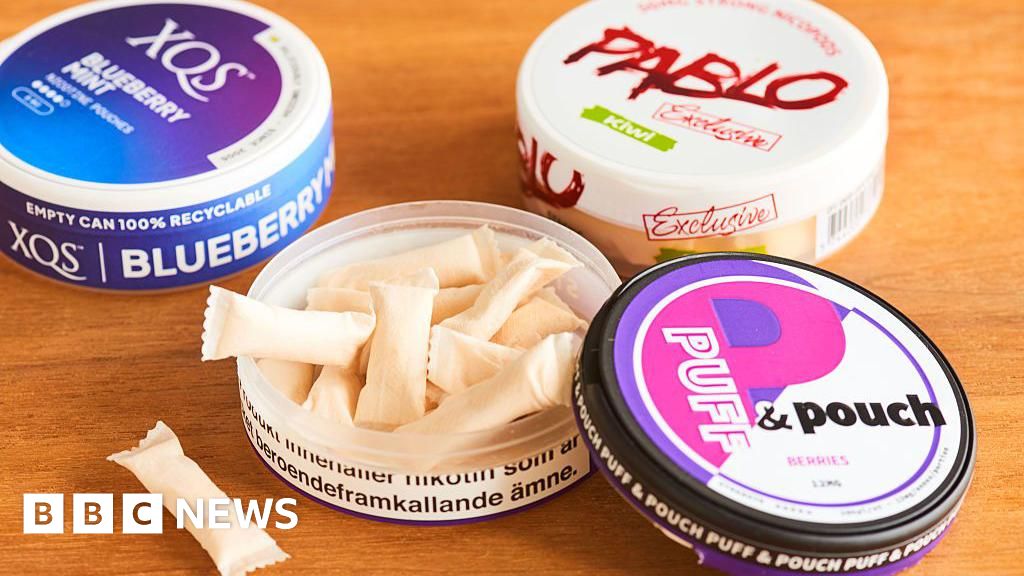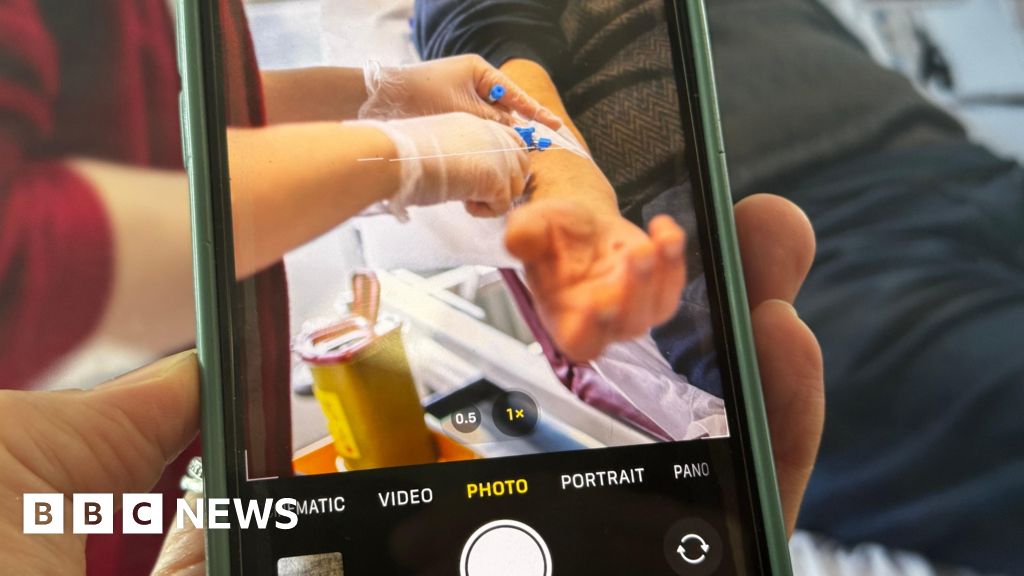ARTICLE AD BOX
 Image source, Paul Elkington
Image source, Paul Elkington
Prof Paul Elkington, pictured, co-developed the PeRSo system in response to a shortage of PPE
By Angela Henshall
Business reporter, BBC News
Looking back at the start of the coronavirus pandemic, Prof Paul Elkington says it was soon apparent that he and his colleagues would run out of PPE (personal protective equipment).
"I'm a lung doctor, and by mid-March 2020 we realised the process we had to protect our staff was not going to be sustainable," says Prof Elkington, a respiratory consultant at University Hospital Southampton.
"We were initially wearing disposable FFP3 masks, gowns and visors, but within a few weeks it was obvious we weren't going to be able to maintain those supplies."
As the airborne coronavirus spread around the world, urgent demand for PPE led to severely stretched supply chains, and rationing of supplies in many countries.
In the UK, doctors like Prof Elkington were forced to improvise. His team came up with the PeRSo, a personal, battery-powered respirator device worn over the head like a hood with a clear window, that travels around with you.
Priced at around £225 each, and lightweight and reusable, it works using a replaceable hepa (high-efficiency particulate absorbing) filter, which sterilises incoming air.
Over time it became clear that not only was PeRSo more comfortable and efficient, but it was more cost effective versus disposable PPE.
Image source, Getty Images
Image caption,Hospitals around the world had to rush to order in face masks and other PPE back in 2020
The PeRSo respirator was not only used in Southampton, but across 16 other NHS trusts. Crucially, staff absences were lower at Prof Elkington's hospital than the rest of the country.
He and a colleague, Prof Hywel Morgan, both later won an MBE for their work producing the respirator, but despite talks with Dyson, they decided not to patent their design. Instead they made it open source - publishing the design on the internet so that others could reproduce it in South Africa among other countries.
Fast-forward to 2023 and supplying PPE, remains a "deeply emotive issue" for everyone "because so many people got burnt," says one senior NHS manager who asked not to be named.
He specifically references how procurement managers at the height of the crisis found themselves desperately paying high prices for products largely from China, some of which turned out to be unsuitable or even fake.
Three billion pieces of PPE were used by the NHS in just the first six months of the crisis, according to research.
However, the Department for Health and Social Care accounts for 2020/21 reveal that £673m-worth of PPE bought during the pandemic were unusable, while £750m of equipment was not used before its expiry date.
Relying on just one supply country was always a horrible risk, says Willy Shih, the Robert and Jane Cizik professor of management practice at Harvard Business School who studies global supply chains.
He says that the primary challenge with PPE is: "Governments not buying until they really urgently need it... demand is very spiky."
Prof Shih wants to see strategic reserves or national stockpiles created.
He also makes the point that if you want to retain domestic manufacturing capacity on-tap, "it costs you money to keep that manufacturing facility warm and functioning".
Aside from the environmental cost, spending money to ship disposable PPE from China, storing it in warehouses, and getting rid of the waste after it has been used is all painfully expensive.
Analysis from sustainability experts like Chantelle Rizan, clinical lecturer in sustainable healthcare at Brighton and Sussex Medical School, suggests that the best way of tackling this problem is threefold.
Firstly, by drastically reducing the use of gloves, and replacing them with more hand washing. And combining this with manufacturing PPE closer to home and, crucially, extending the use or reuse of things like masks and gowns.
Global Trade
Dr Tom Dawson says that until around 2004 the drapes and gowns used in hospital operating theatres were largely made of cotton, but then there was a rapid shift to disposable plastics.
He is a former emergency medicine doctor who founded Revolution-ZERO, a reusable medical textile company in May 2020.
Dr Dawson describes the "PPE chaos of the pandemic and the inevitable deaths that followed" as painful to watch. In response he designed a robust suite of reusable gowns, aprons, surgeons' drapes and caps.
His textile products, typically made from polyester or cotton, range from £4 for masks and wraps, up to £50 for specialist draping systems. Using a specialised laundry process and 134C sterilisation they can be used multiple times before being repurposed into other healthcare items like screens.
Image source, Revolution-ZERO
Image caption,Revolution-ZERO's reusable medical textiles, pictured, can be used again and again
But swapping from disposable to reusables is not a simple fix for most hospitals because they no longer have laundry facilities on-site - it's all been outsourced.
So, although Dr Dawson has had enthusiastic interest from 150 trusts, he's having to work at building the firm's own decontamination units and laundries that are on, or close to, healthcare sites.
One such facility is due to open in Cornwall in April. Meanwhile, the firm has sold more than £300,000 worth of products to date. And overseas, medical charity Médecins Sans Frontières will soon be using Revolution-ZERO's products for their operations in Mozambique and Kyrgyzstan.
But what can hospitals do with used plastic PPE waste? That is where Welsh firm Thermal Compaction Group comes in.
Its machines, which are about the size of a US fridge-freezer, melt down used plastic PPE at more than 300C. The plastic is then compressed and cooled to create solid blocks.
Image source, Thermal Compaction Group
Image caption,Thermal Compaction Group's technology melts and compresses PPE plastic for reuse
Hospitals can then sell these blocks to manufacturers who will use them to make new plastic products, such as buckets.
The firm has sold more than 100 units, mainly in the UK, but also in Australia, and the Netherlands. It is also just about to enter into a deal with the US Navy who want to adapt its units for use on warships.
Some customers buy the processing units while others rent them. An average hospital might pay anywhere from £1,000 per month, up to £2,500, depending on volumes and equipment needed.
The other strategy to reduce the volume of PPE waste is to avoid its use in the first place.
Post-pandemic it is rare to see any healthcare worker without gloves, but research shows that frequently using non-sterile gloves can lead to poor hand hygiene and may even increase transmission of preventable infections.
This happens because people forget to change them at key moments during a shift, for example moving from a computer back to examining a patient.
Among others, Universities Hospitals Sussex and London's Great Ormond Street are continuing with a "gloves off" project to try to cut use and encourage handwashing instead.
"We could drastically reduce inappropriate use of gloves with more education around when you don't need them," says Paul Chivers, head of PPE innovation and sustainability at NHS Supply Chain.
He explains workers only need to wear them if in contact with bodily fluids, or highly infectious patients, Mr Chivers estimates that reducing the number of times workers wear gloves has the potential to save £48m in procurement costs or 9.5 tonnes of waste in NHS England.
Back in Southampton, Prof Elkington is sceptical that the UK is better prepared for next pandemic in any meaningful way.
"My worry is that the painful lessons of the early pandemic have been completely forgotten," he says, pointing to the current funding crisis overwhelming the NHS.
"Someone somewhere should be saying we have to learn those lessons [from the pandemic] we need a plan, a government driven strategy."
He adds that in the meantime, most of his hospital staff are keeping their personal respirators on standby in their offices. "At least we're ready within this hospital for the next one - we have 5,000 ready."

 2 years ago
53
2 years ago
53








 English (US) ·
English (US) ·